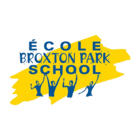ANNOUNCEMENTS - TUESDAY, NOVEMBER 8
- Ah..we gained that extra hour of sleep since the DayLight Savings time changed over the weekend. I hope you are feeling a bit more rejuvenated. Did you know that sleep is one of the most important factors in helping students succeed in their learning? It is recommended that school age students get 8-11 hours of sleep a night to be fully recharged for the next day. Having enough sleep allows students and teachers to be more alert, improved thinking, improved focus and overall being in a more positive mindframe. With all those positive effects, we should all be more like cats and sleep most of the day, just kidding. Talk with your parents about these important effects and set up a regular bedtime plan.
- Lunch - o - lele for Grade 6 happens today at lunch recess, in Mme iampen’s classroom.
-
Chess club is canceled for this week due to the Scholastics Book Fair. It will resume after Fall Break.
-
The Jr. Girls Volleyball team fought hard last night and brought home silver in the finals. We are so proud of all of their hard work this season!
-
Good luck to the Sr. Girls Volleyball team in their semifinal match at Duffield today.
-
The Sr. boys Volleyball team took on Prescott in their semi final match today after school in the large gym. Come cheer them on!
Indigenous Veterans Day (Today November 8)
The First Nations, Inuit and Métis of Canada have a long and proud tradition of military service to our country.
The First World War raged from 1914 to 1918 and more than 4,000 Indigenous people served in uniform during the conflict. It was a remarkable response and in some areas, one in three able-bodied men would volunteer. Indeed, some communities (such as the Head of the Lake Band in British Columbia) saw every man between 20 and 35 years of age enlist. Many Indigenous men brought valuable skills with them when they joined the military. Patience, stealth and marksmanship were well-honed traits for those who had come from communities where hunting was a cornerstone of daily life. These attributes helped many of these soldiers become successful snipers (military sharpshooters) and reconnaissance scouts (men who stealthily gathered information on enemy positions). Indigenous soldiers earned at least 50 decorations for bravery during the war. Henry Louis Norwest, a Métis from Alberta and one of the most famous snipers of the entire Canadian Corps, held a divisional sniping record of 115 fatal shots and was awarded the Military Medal and bar for his courage under fire.
When the Second World War erupted in September 1939, many Indigenous people again answered the call of duty and joined the military. By March 1940, more than 100 of them had volunteered and by the end of the conflict in 1945, over 3,000 First Nations members, as well as an unknown number of Métis, Inuit and other Indigenous recruits, had served in uniform. While some did see action with the Royal Canadian Navy and Royal Canadian Air Force, most would serve in the Canadian Army.
Indigenous men and women have continued to proudly serve in uniform in the post-war years, as well. Like so many of those who have pursued a life in the military, they have been deployed wherever they have been needed—from NATO duties in Europe during the Cold War to service with United Nations and other multinational peace support operations in dozens of countries around the world. In more recent years, many Indigenous Canadian Armed Forces members saw hazardous duty in Afghanistan during our country's 2001-2014 military efforts in that war-torn land.
